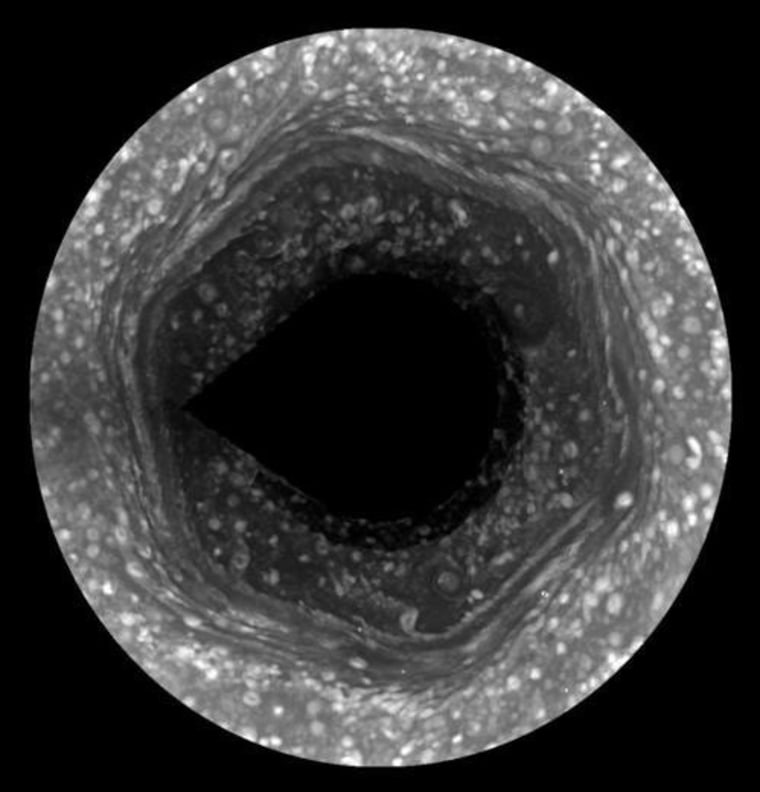Cameras aboard NASA's Cassini spacecraft have captured images of a mysterious hexagon-shaped cloud formation that is likely formed by the path of a jet stream flowing around the planet's north pole.
The hexagon, which was discovered by the Voyager spacecraft in the early 1980s, encircles Saturn with an estimated diameter wider than two Earths. The associated jet stream likely whips along the hexagon at about 220 miles per hour (100 meters per second).
"The longevity of the hexagon makes this something special, given that weather on Earth lasts on the order of weeks," said Kunio Sayanagi, a Cassini imaging team associate at the California Institute of Technology. "It's a mystery on par with the strange weather conditions that give rise to the long-lived Great Red Spot of Jupiter."
The last visible-light images of the entire hexagon were captured by NASA's Voyager spacecraft nearly 30 years ago, the last time spring began on Saturn. For the next 15 years, the north pole was shrouded in darkness.
Cassini has been orbiting Saturn since 2004, and unlike Voyager it has a better angle for viewing the north pole and provides higher-resolution images. But the long darkness of Saturnian winter hid the hexagon from Cassini's visible-light cameras for years. During this time, the craft's infrared instruments were able detect the shape using heat patterns, with the resulting images showing the hexagon is nearly stationary and extends deep into the atmosphere. The images also showed a hotspot and cyclone in the same region.
Just as the north pole emerged from winter in January, Cassini's cameras went to work. Imaging team scientists stitched together 55 images to create a mosaic and a three-frame movie.
The science team will search the images for clues about the causes of the hexagon, where it gets and expels its energy, and how it has stayed organized for so long. They will pay close attention to the newly identified waves that radiate from the corners of the hexagon where the jet takes its hardest turns, along with the multi-walled structure that extends to the top of Saturn's cloud layer in each of the hexagon's six sides.
"Now that we can see undulations and circular features instead of blobs in the hexagon, we can start trying to solve some of the unanswered questions about one of the most bizarre things we've ever seen in the solar system," said Kevin Baines, an atmospheric scientist at NASA's Jet Propulsion Laboratory, Pasadena, Calif. "Solving these unanswered questions about the hexagon will help us answer basic questions about weather that we're still asking about our own planet."
